Gifting has never been easier
Perfect if you're short on time or are unable to deliver your gift yourself. Enter your message and select when to send it.

Cart
Your cart is empty
The dining table is where families gather for meals, intimate dinners, and festive occasions. Creating a truly enjoyable dining experience involves thoughtful table arrangements, conceptual design, and, especially, warm and inviting lighting. In this guide, Rowabi will delve into the essential considerations for choosing the perfect dining table light fixture to enhance comfort and create a healing ambiance during meals.
Before diving into selecting the right light fixture, it's important to ensure you have a dining table that suits your family's needs. Here, we'll analyze four key factors: style, size, shape, and substance.
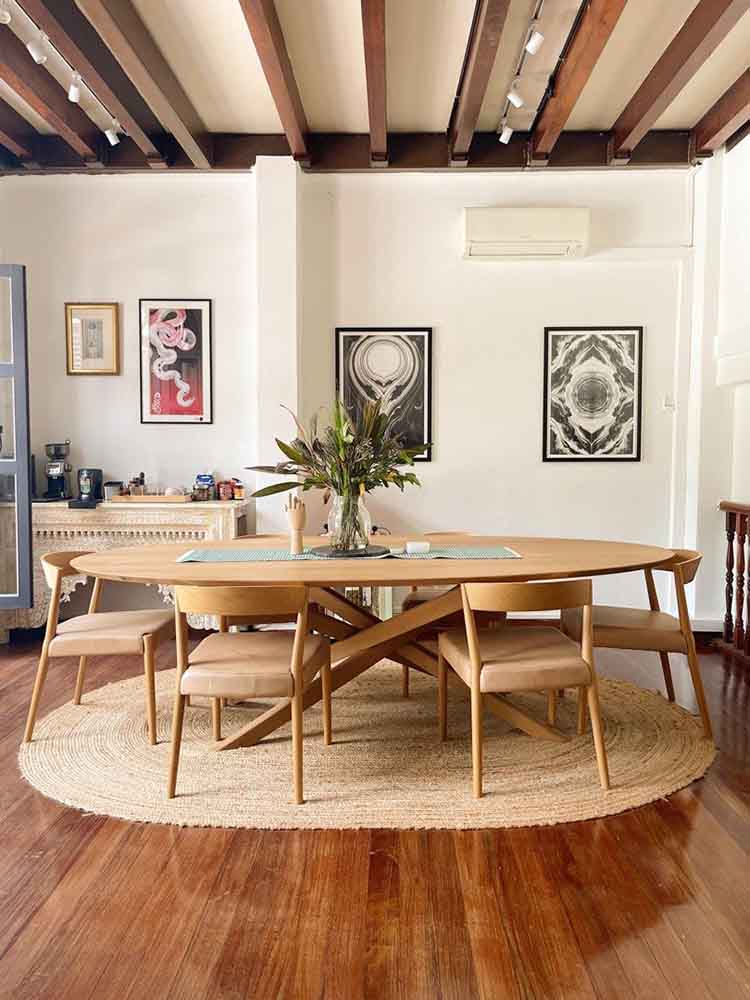
Find out which dining table is the best choice for your house with us. Source: Carousell [1]
When selecting a dining table, it's essential to ensure that it complements the overall home decor. Dining tables vary widely in style and design, influenced by their shapes and the patterns or materials they incorporate, such as intricate floral motifs or smooth marble finishes. A practical approach is to use existing furniture as a guide.
For minimalist interiors with angular furniture, opt for simple square or rectangular tables with unique table surfaces. In contrast, traditional or farmhouse styles benefit from wooden tables with details like turned legs and planked tops.
When choosing a dining table, consider the available space and the number of people you typically host for meals. Ensure that everyone has enough room to dine comfortably without feeling cramped or having excessive space.
A general guideline is to allocate about 24 inches of width per person and ensure sufficient space around the table for comfortable seating and movement. If you have limited space but often host many guests, consider a round table, which can efficiently accommodate more diners in a smaller area.
As mentioned, the shape of the table significantly impacts both the overall decor and its functionality. For example, rectangular tables are versatile and suitable for most styles. Oval or round tables are ideal for homes with a vintage farmhouse aesthetic.
When considering the material and finish of your dining table, there are several options to suit different styles and needs.
Hardwoods such as oak, walnut, or maple offer durability and can be stained to enhance their natural beauty or left untreated for a rustic charm. Glass dining tables provide a sleek and modern look, making them ideal for smaller spaces as they create an open feel.
For a contemporary setting, metal dining tables crafted from materials like steel or iron offer sturdy construction and can be finished with matte, brushed, or polished surfaces to achieve a unique aesthetic.
Now that you've selected your dining table, let's move on to choosing the perfect pendant light. We'll guide you through five criteria to help you find the ideal pendant light for your home.
When selecting a pendant for the dining room, maintaining proportion between the light fixture and the dining table is crucial, regardless of the table's shape—whether it's round, square, or rectangular.
A common guideline is to work with a pendant width approximately one-third of the table's length. This approach ensures that the pendant doesn't overpower the space but rather complements and highlights the table itself.
The essence of a pendant light is to illuminate the dining table and enhance the overall ambiance of the dining room. It is a focal point that can transform the entire room's aesthetic.
Achieving a balance between preferred light fixtures and desired style involves paying attention to details. For example, consider matching the materials of small details on the table with the pendant light's materials. Alternatively, opt for a simple pendant that complements various materials and shapes.
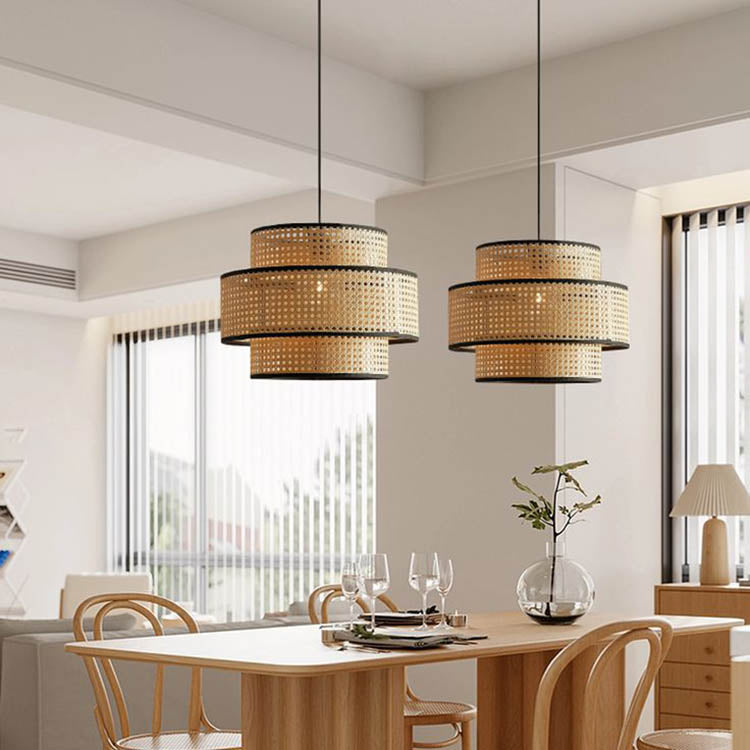
The rattan pendant light is highly versatile and compatible with many interior design styles. Source: Pinterest [2]
One material worth exploring for its versatility is rattan, which has gained popularity recently. Rattan can be crafted into exceptional furniture pieces, especially pendant lights, showcasing natural beauty and sophisticated craftsmanship while offering diverse shapes and designs.
Why not? Mixing and matching styles is a way to express your unique personality, differentiate yourself, and create focal points in your home. For instance, a woven rattan pendant light like this adds sophisticated rustic charm to various styles such as coastal, mid-century modern, bohemian, and beyond. It's about embracing diversity and making your space truly your own.
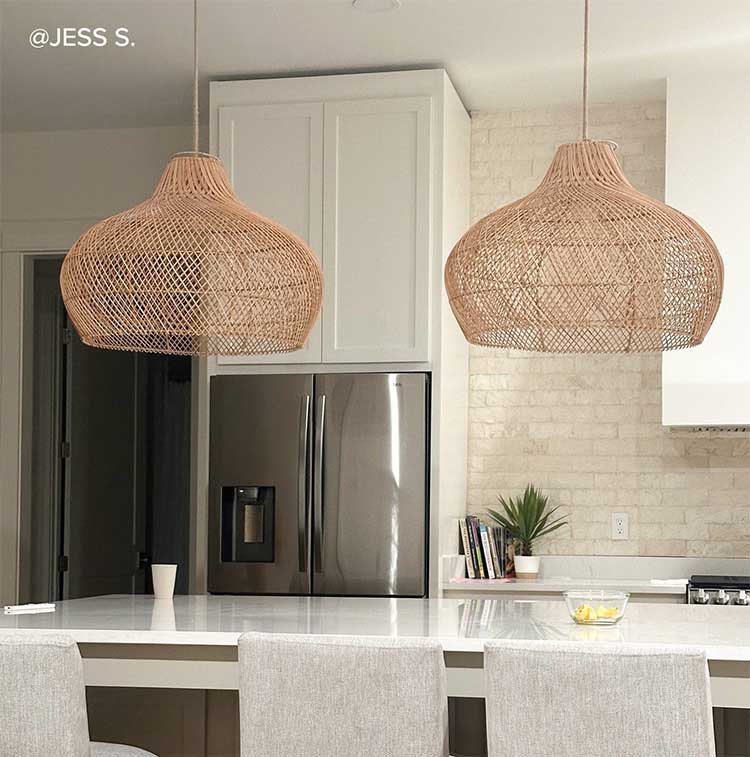
The Kloe Pendant Light is an excellent example that complements all styles and various mix-and-match approaches. Source: @Jess
The ideal height to hang a pendant light above a dining table is typically 30 to 36 inches above the surface of the table. This distance ensures optimal illumination while allowing for comfortable interaction and conversation without obstruction. Adjusting the height within this range can help achieve the desired lighting balance and functionality for the dining area.
In fact, the answer leans towards both (and, of course, varies depending on different situations for us to decide).
For example, if your dining table is large and long, having two identical pendants placed at a suitable distance ensures good proportion. However, if the table is small to medium-sized, one pendant is sufficient, or clustering 2-3 smaller pendants together is also a viable option.
We also sought insights from Henry Phan, an interior designer with 3 years of experience, regarding key considerations when choosing the perfect dining table light fixture for a home. Henry highlighted eight main factors that he believes are crucial: table shape, view, light type and brightness, ceiling height, room style, adjacent light fixtures, adding or relocating ceiling outlets, and dimmer controls.
The shape of your dining table significantly impacts the selection of lighting fixtures. For instance, a round table typically pairs well with a single central pendant light as a focal point, while a long rectangular table benefits from linear pendant lights to evenly illuminate the entire surface where people gather.
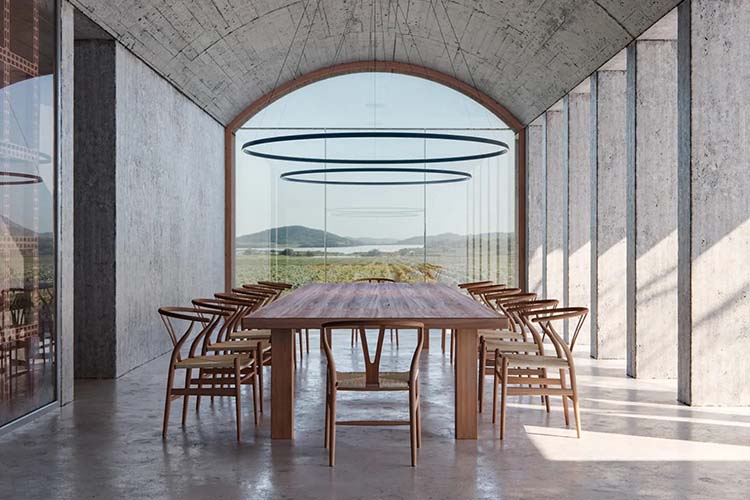
Each shape of table requires a corresponding shape of pendant light, whether it's round, square, large, or small. Source: 2Modern [3]
One aspect people often overlook is how the lighting fixture appears from different viewpoints within the dining room. Certain angles may obstruct important views, such as a TV screen, if not carefully positioned. It's essential to ensure that the fixture placement is comfortable and doesn't interfere with the room's functionality.
Many individuals select fixtures based solely on personal preference without considering the need to create a cohesive and balanced look for the entire space. Henry Phan emphasizes the importance of paying close attention to this aspect when selecting dining room lighting.
Light bulbs are also critical considerations beyond just the appearance of the fixture. The type of light emitted by bulbs should ensure an inviting atmosphere while providing adequate illumination for meals, gatherings, or other activities.
You can choose between warm yellow-toned bulbs or cooler white ones, depending on your preference. Common types of bulbs include incandescent, LED, and halogen, each offering different qualities of light that can impact the ambiance of your dining room.
The ceiling is crucial when selecting lighting fixtures because different ceiling styles and heights influence the choice of suitable lights. Higher ceilings offer more flexibility, allowing for a broader range of chandeliers and pendant lights that can effectively fill the space and create a grander visual impact.
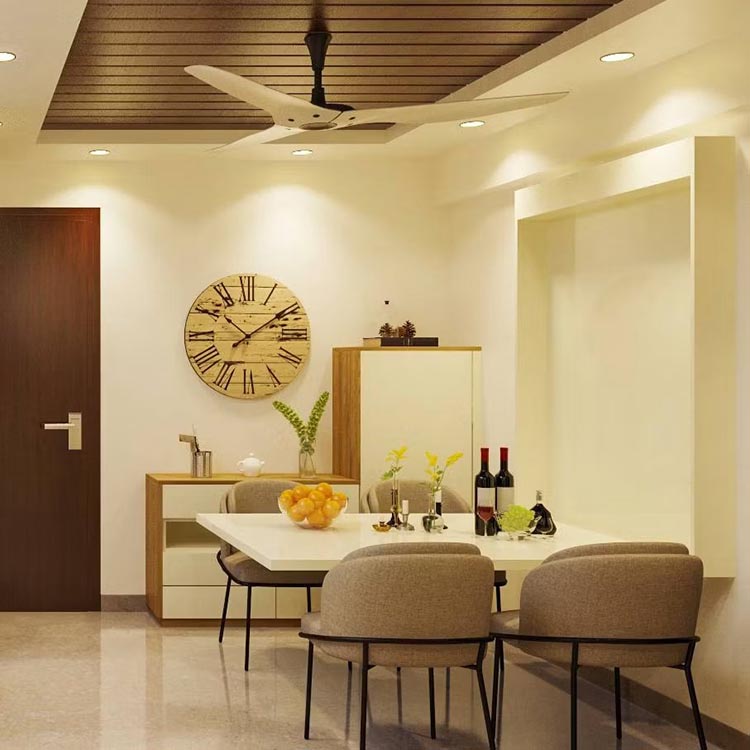
Pay attention to the details on the ceiling, including its style and height, when selecting a light fixture. Source: Livspace [4]
However, with lower ceilings, it's advisable not to overcrowd the space with oversized fixtures. Instead, opting for flush-mounted or semi-flush-mounted fixtures is more practical as they conserve space and provide sufficient illumination for the room without encroaching on headroom.
This is because lighting fixtures serve as both furniture and decoration, necessitating compatibility with other furnishings to complement the home's style. Nowadays, pendant lights come in diverse materials suitable for various home aesthetics, with popular options including glass, metal, and rattan.
When considering adjacent light fixtures in the dining room, prioritize cohesion. Take into account other sources of light, such as wall sconces or floor lamps, and ensure they complement the main dining area lighting. Maintain consistency in light color and intensity, ensuring a harmonious blend without color discrepancies.
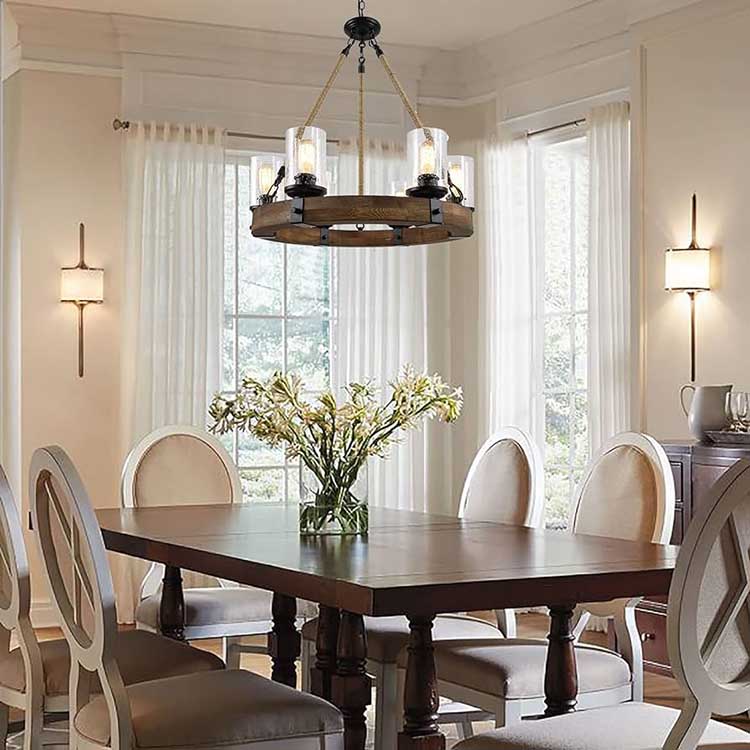
Never underestimate the importance of other lights alongside the main fixture. Source: RBK [5]
Another consideration that Henry often finds people overlooking is whether the ceiling outlet needs to be moved or added to accommodate the chosen lighting fixture. Nowadays, it's possible to add or relocate a ceiling outlet to fit your chosen light, as long as you consult with an electrician.
Dimmer switches are incredibly convenient because they allow you to easily control the brightness of a room to your desired level.
Light bulbs often have fixed brightness levels that may not suit everyone's preferences, and not every activity requires the same amount of light. For example, you may want softer lighting during meals than when cooking or preparing meals.
Dimmers provide the flexibility to adjust the light intensity based on your needs and activities.
Choosing the right size pendant light for your dining table involves considering several important factors. A common guideline is to select a pendant light with a diameter that ranges from one-half to two-thirds the width of your dining table. For instance, if your table is 36 inches wide, opt for a pendant light that ranges between 18 to 24 inches in diameter.
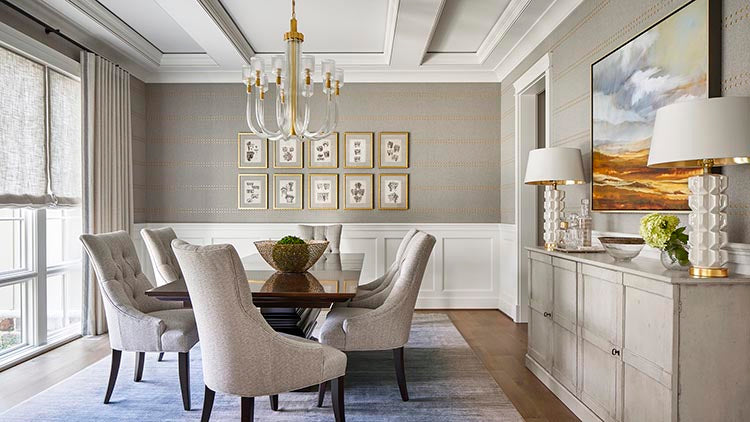
Choose a pendant size that fits proportionally with the size of the table. Source: Homes & Gardens [6]
Additionally, it's crucial to ensure that the size and shape of the pendant light complement the shape and size of your dining table. For longer tables like rectangular or oval shapes, linear pendant lights are often a suitable choice as they can effectively accentuate the length of the table.
On the other hand, round or square tables typically pair well with centrally positioned pendant lights, which can provide balanced illumination across the tabletop.
The number of pendant lights to hang over a dining table depends on your home's space and specific requirements.
For a larger table or expansive dining area, you might opt for larger pendant lights spaced evenly to provide adequate illumination and visual balance. In contrast, smaller tables or more intimate dining spaces may benefit from a single pendant light that offers softer, ambient lighting.
Always keep in mind that the number of pendant lights should correspond to the length and width of the table.
Wiring a chandelier with multiple lights involves several steps to complete:
What is the rule for pendant lights on a dining table?
How do I choose a light fixture above my dining table?
How high should 3 pendant lights be over a dining table?
How low should pendant lights hang over the dining table?
Can I put a round chandelier over a rectangle table?
How do I choose a dining room table light?
What kind of light should I put over my dining room table?
How big should the light be over the dining table?
How big should a chandelier be over a dining room table?
Should I put one or two pendants over my dining table?
Does a light have to be centered over a table?
Do you need a light over a dining table?
How many pendants are for a 6-foot island?
Now that we've covered the steps and key factors for choosing the perfect dining table light fixture, are you ready to upgrade your dining room area and elevate the quality of your meals? Create a space where everyone feels at home and is eager to gather for conversation. Let's find and install a fixture that suits your needs perfectly!
Source img:

How To Choose the Right Dining Room Chandelier or Pendant?
Creating a cozy and tranquil dining room for your family goes beyond just beautiful furniture like dining tables and stylish kitchenware. A crucial element is the right lighting that offers depth a...
Read more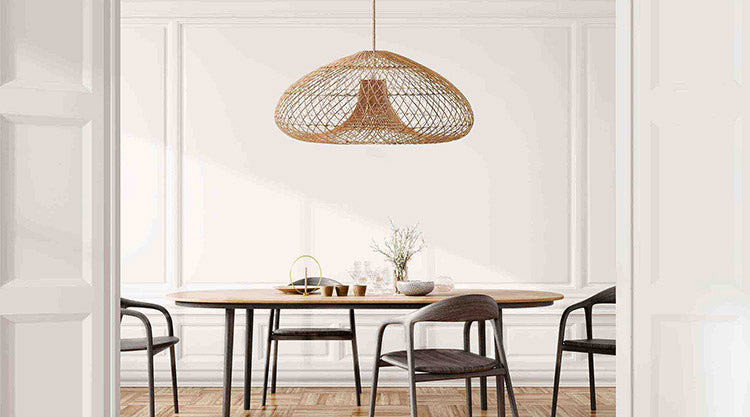
TOP 10 BEST Chandelier Store Near Me in Houston, Texas
Are you looking for the best Chandelier stores in Houston, Texas? You're in luck! In this guide, we'll explore the top 10 chandelier stores near you in Houston. No need to spend time searching or d...
Read moreGifting has never been easier
Perfect if you're short on time or are unable to deliver your gift yourself. Enter your message and select when to send it.

Leave a comment
This site is protected by hCaptcha and the hCaptcha Privacy Policy and Terms of Service apply.